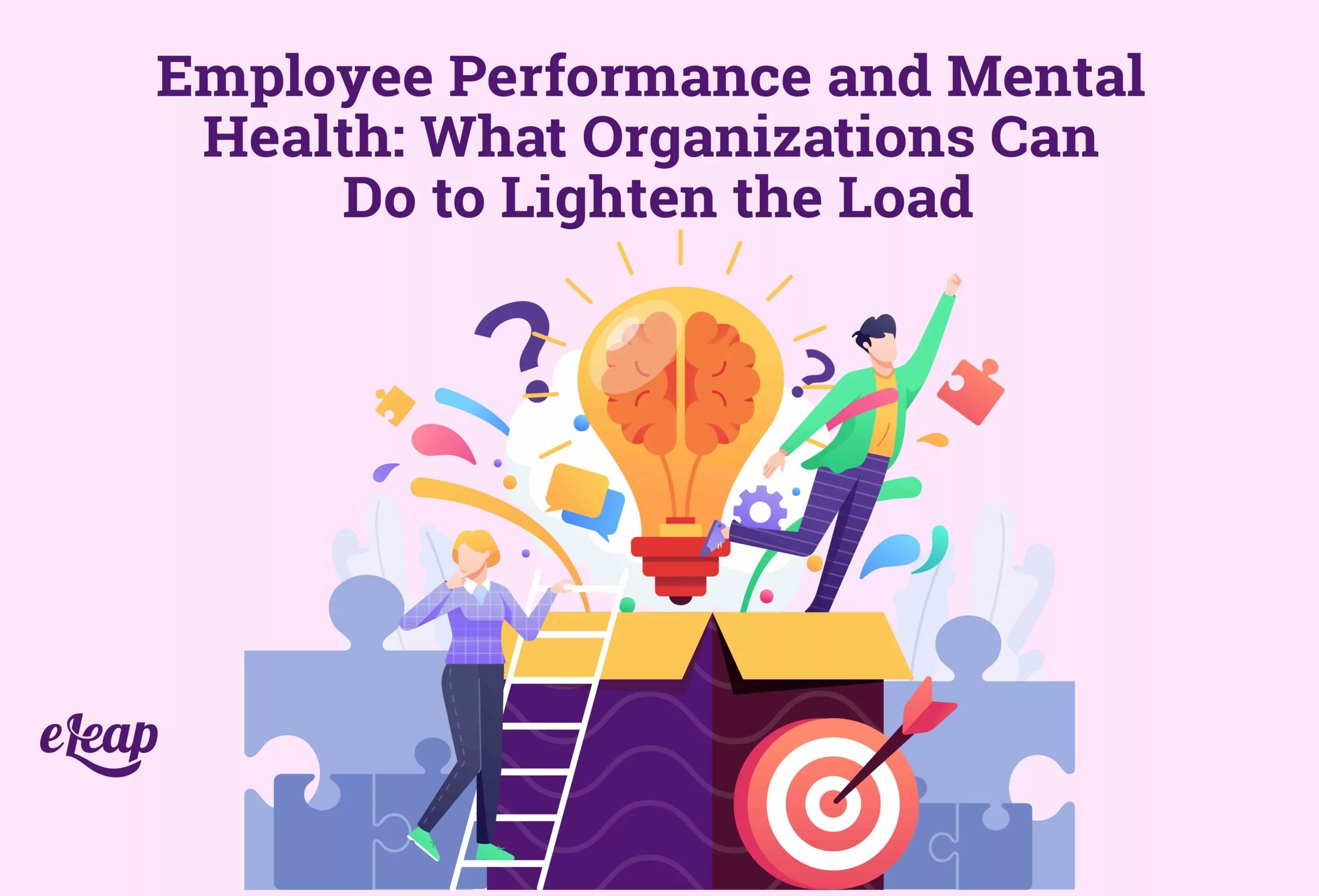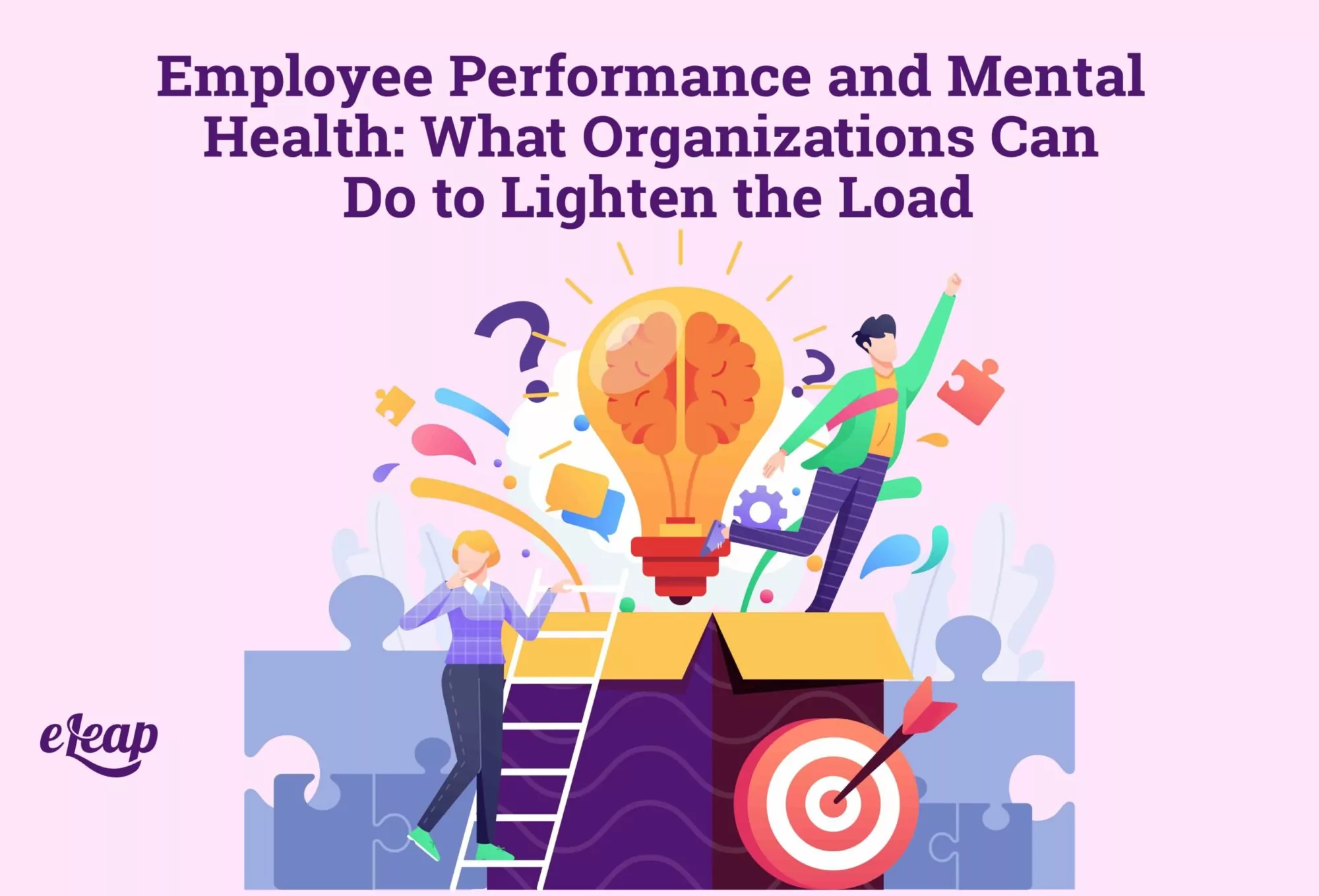Employee Performance and Mental Health: What Organizations Can Do to Lighten the Load

When there’s a performance issue that’s caused by a lack of initiative or a simple inability to perform, business leaders and supervisors generally know how to respond and inform people in a way that leads to performance improvement. But, what if employees are having performance issues that are the result of mental health struggles that they’ve not disclosed? After all, many people don’t like to offer this information up freely—they feel it makes them appear weak, or as if they’re trying to make excuses for their shortcomings. The reality, though, is that if your organization doesn’t promote mental health and having an open discussion about it, your employees are going to continue to struggle silently, and it can affect more than just their individual performance.
The pandemic has been long and uncertain. Even people who may have been otherwise mentally “healthy” a few years ago are now struggling to adjust to the new world we live in. Everyone has been through something they may have never anticipated, and then the stress of life, work, family, etc.—it all keeps piling up. Some employees will be what the mental health industry refers to as “high-functioning” with their depression or anxiety—that’s fueled by their fear of failure and feeling that they would be somehow “less than” others if people knew.
On the other hand, studies show that depression can reduce cognitive performance in as many as 35% of cases and it can interfere with someone’s ability to do their physical work around 20% of the time. So, what can employers do? Building an employee performance management model that includes mental health awareness and check-ins is a good place to start.

Embracing People and Their Needs
In decades past, it was heavily suggested that people “leave their home life at home” or to “keep their work and personal life separate” for fear of it interfering with their work. Unfortunately, that was an unrealistic ask for any organization—people cannot compartmentalize like that, at least not in a mentally healthy way.
Today, however, organizations have realized that the repercussions caused by this mentality are not worth it, and are not something that they want to keep seeing. Mental health refers to a person’s psychological, emotional, and social well-being, and this must get as much attention as the rest of the body’s physical health needs.
The struggle, of course, is that it’s not always easy to recognize people’s needs or issues surrounding mental health. As mentioned above, an organization could have a high-functioning employee that is hitting their goals out of the park simply because it fetters away their anxiety to do so. And still, no one even knows they struggle with anxiety in the first place.
It doesn’t have to be depression or anxiety, either. It could be something as simple as too much stress at work, relationship or life issues at home, or other things that occur that change the natural state of emotions in the body. If people are expected to “leave it at home” and show up to work with limited performance, it’s clear that they have not been successful. What’s also clear is that organizations stand to be more successful if they embrace the needs of their people and ensure that everyone is encouraged to take care of their mental health, first and foremost.
Identifying Potential Mental Health Issues
These issues or concerns are more difficult to broach, not because they’re difficult to identify, but because not many people know how to successfully talk about them. Leaders and employers need to be compassionate first and foremost, and they need to know what to look for if they are trying to ensure the optimal mental health of their team.
When people are struggling with stress or mental health conditions, they could see negative effects like:
- Loss of communication and collaboration
- Social avoidance
- Lack of engagement with work
- Reduced performance or productivity
- Limited daily functioning or physical capabilities
These issues can no longer be ignored. The reality of mental health, and the worse reality of it going untreated, is too close to home. Once issues have been identified, finding a way to assist with them will be the priority of the organization.
Get Educated and Get Honest
The best thing that employers can do is to provide employees with all the educational resources that they need to understand mental health and learn how to take care of their own. This is a topic that’s often hard to discuss, but the best employers will create an open, welcoming environment where people’s mental health and well-being are put before anything on their to-do list. If organizations don’t educate people and promote positive mental health habits, absenteeism, morale, and productivity will continue to be serious issues.
Include information about mental health and emotional wellbeing in your training and onboarding materials. Make sure that you educate leaders and managers on how to recognize and address issues related to mental health, and that you encourage employees to communicate openly and honestly so that the organization can help them in as many ways as possible.
Create a Supportive Culture
Along with educating employees, support is one of the best things that leaders can offer. It can be helpful to encourage talking about feelings and stress and suggest setting up one-on-one meetings or peer-to-peer relationships that allow people to create healthy goals out of their mental health concerns. Something as simple as asking how people are feeling, instead of just assuming they’re good, can go a long way in building a more supportive framework that welcomes open discussion.
Establishing solid channels for open communication is one example of a healthy choice, and it’s one that organizations today are making without so much as a second thought. When the resources are in place and the organization shows unyielding support for its employees, that will change the mental health conversation in so many ways. For now, it’s about embracing the tools available to encourage everyone to relate their performance to their mental health and creating a culture of support for those who need it. Contact us today for a free consultation on how to create a supportive work culture making your employees feel safe at work.